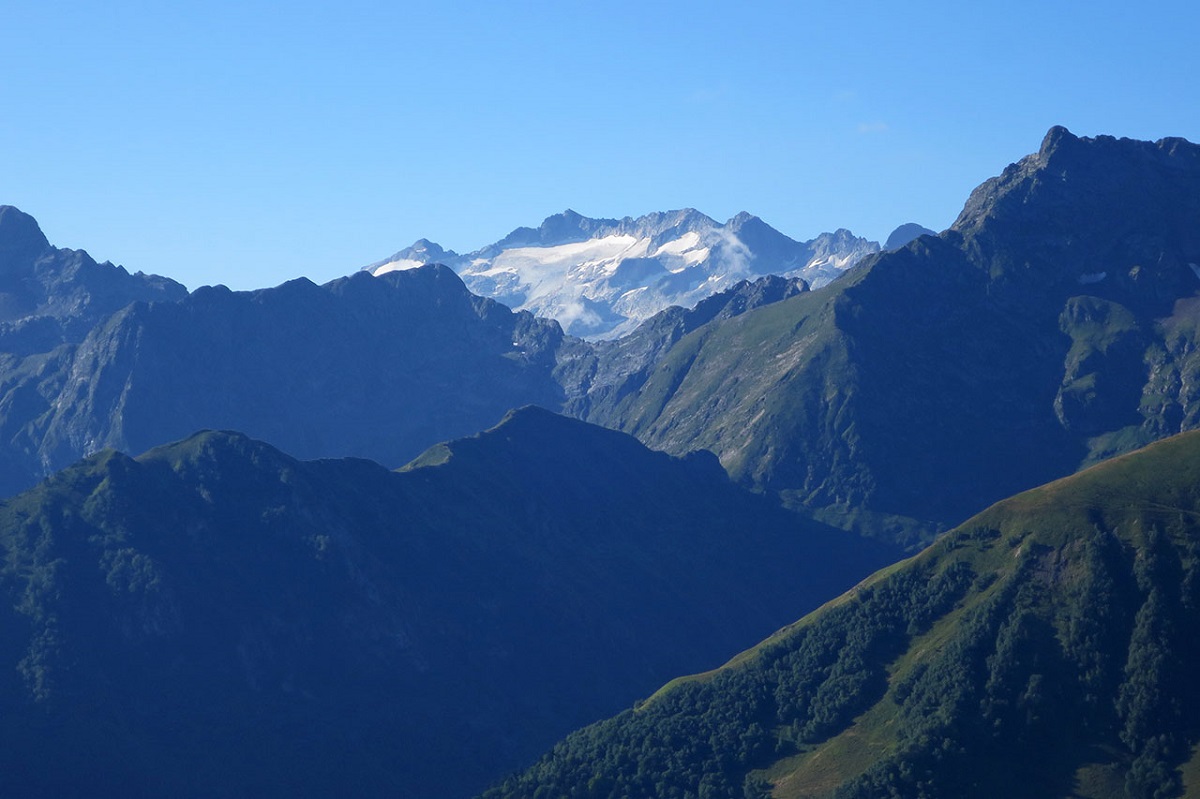
Have you ever wondered why distant mountains look bluish? While it may seem like a mystical fact, the explanation of this phenomenon is rooted in science. There are numerous factors that contribute to this intriguing phenomenon and of course, light plays a fundamental role in this phenomenon.
In this article we are going to tell you why mountains in the distance look blue.
Why do mountains in the distance look blue?

The bluish appearance of distant mountains to the naked eye is mainly attributed to light scattering. Lord Rayleigh, a renowned 19th century British physicist, was the first to discover this phenomenon, which arises when sunlight interacts with atmospheric elements such as dust particles, moisture and gases.
When sunlight encounters particles in the atmosphere, Its white light is separated into several wavelengths. The dispersion of these wavelengths is not uniform and blue light is especially prone to being redirected. As a result, when we look at distant mountains, they often appear to have a bluish hue.
Color perception is closely linked to the wavelengths of light that our eyes receive. When it comes to mountains in the distance, the predominant color is blue, since it has a greater capacity to disperse in the atmosphere. On the contrary, mountains closer to us tend to exhibit warmer hues, such as brown or green, as light dispersion is reduced over shorter distances.
The process of reflection and absorption of light

The bluish hue of the distant mountains is not solely due to the scattering of light; It is also influenced by the processes of light reflection and absorption. As the sun's rays reach the mountains, Some of the light is absorbed by their surfaces, while another part is reflected back to our view.
The rocks and vegetation that form the surface of mountains have the ability to absorb specific wavelengths of light, resulting in a distant appearance that is often perceived as having a bluish tint. Additionally, light reflected from the mountain's surface can interact with light scattered in the atmosphere, further enhancing the notable blue hue.
The effect of viewing angle and perspective

Taking into account the perspective from which we contemplate the majestic mountains, it is important to note that as we distance ourselves, our field of vision widens. This increasing angle has the potential to affect the amount of diffuse light that reaches our eyes. When combined with the phenomena of light scattering and absorption of specific wavelengths, this perspective effect ultimately results in the distant mountains take on a blue hue when viewed from a distance.
The structure and composition of the Earth's atmosphere must also be taken into account. The visual perception of distant mountains is greatly influenced by atmospheric composition. Particles such as dust, smoke and pollution can act as filters, absorbing specific wavelengths of light and enhancing the blue tint of distant mountains.
The outline of distant mountains can be darkened by the presence of water vapor in the air, which produces a hazy effect that contributes to the perception of a bluish tone. These factors work together to create the visual illusion of mountains in the distance wrapped in a delicate blue blanket.
Other atmospheric phenomena can also be observed. The visual perception of distant mountains can be influenced by various atmospheric phenomena. Factors such as air temperature and relative humidity have the ability to change how light is dispersed and ultimately affect the intensity of the blue color we see. Besides, The presence of clouds, fog or suspended dust can alter the appearance of the mountains, introducing new subtleties and textures to its bluish tone.
Other frequent visual phenomena
Surely it has happened to you more than once that you are driving down the road and you can see water in the distance in your own wallet. However, as we get closer with the car, the water disappears. When temperatures rise on a hot day, it is common to see what appears to be water on the road in the distance. This phenomenon, known as «mirage», occurs due to a process of refraction of light in the atmosphere near the ground. To understand it better, let's think about how light travels through air.
Sunlight travels in straight lines until it encounters a different medium, such as warm air near the road pavement. When light passes through layers of air with different temperatures, its speed and direction are affected, causing the light to bend slightly.
When we look at the road on a hot day, we see a layer of warm air just above the pavement. This layer of hot air acts as a kind of lens, bending the light that reaches our eyes from the sky. As a result, we see a distorted image of objects beyond the road, as if they were reflected in a watery surface.
This effect is more noticeable on hot days because the contrast between warm air near the ground and cooler air above is more pronounced. Additionally, the hotter the pavement, the more intense the distortion caused by light refraction will be.
Although it may seem like there is water on the road, It is actually just an optical illusion created by the phenomenon of atmospheric refraction. This mirage can be confusing, especially when combined with the instinctive desire to search for water in arid environments.
I hope that with this information you can learn more about why the mountains in the distance look blue.